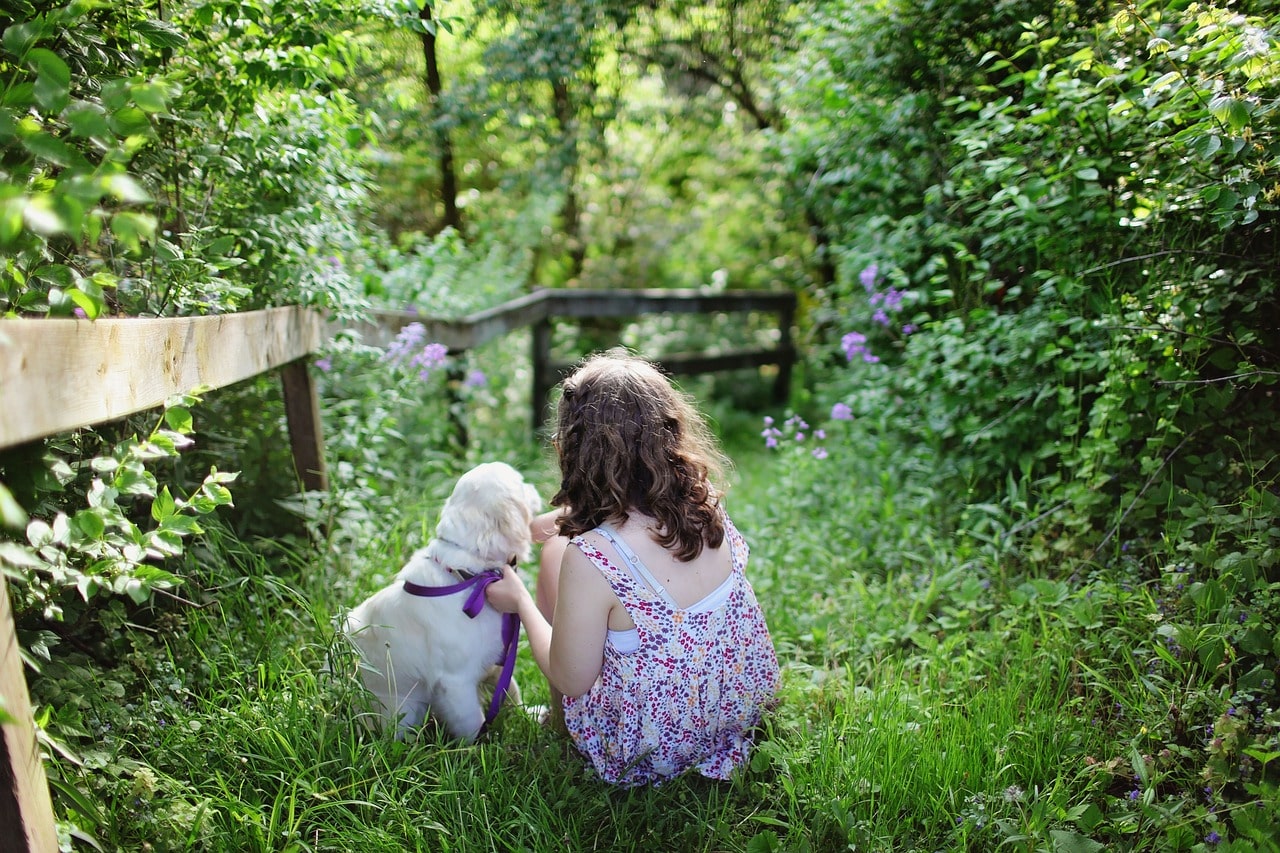Is your dog proving to be a bit of a rebel outside, consistently ignoring your commands?
Fret not!
In this quick guide, we’ll provide you with practical solutions to tackle the challenge of disobedience in outdoor settings.
Whether your pup is distracted or simply unresponsive, we’ve curated effective strategies to help you regain control.
Transform your outdoor adventures into enjoyable experiences where your canine companion responds promptly to your cues.
Let’s delve into the tips that will pave the way for a harmonious and well-behaved partnership with your furry friend.
Our comprehensive guide explores Your Dog Ignores Your Commands Outside, providing insights into common challenges and effective strategies to foster better obedience.
Table of Contents
12 Reasons Your Dog Ignores Your Commands Outside: Unraveling Canine Disobedience

1] Distractions in the Environment
The allure of outdoor stimuli, including captivating scents and intriguing sounds, can create a challenging environment for maintaining your dog’s focus.
Understanding specific triggers that divert your dog’s attention is crucial.
Identifying these distractions allows you to adapt your training strategies, making outdoor commands more compelling.
Tailoring your approach to work with, rather than against, your dog’s natural curiosity enhances obedience in outdoor settings.
2] Lack of Consistent Training in Outdoor Settings
Transitioning from indoor to outdoor training presents a distinct set of challenges.
Dogs may struggle to generalize commands due to variations in the environment.
Consistency is key when bridging this gap.
Gradual exposure to outdoor distractions and reinforcement of commands in diverse settings contribute to a smoother translation of your indoor training routine.
Recognizing and addressing the unique dynamics of outdoor training fosters obedience in various scenarios.
3] Unfamiliarity with Commands in Different Environments
Dogs may not immediately associate commands learned indoors with outdoor settings.
This lack of generalization can lead to confusion.
Reinforcing commands in different environments gradually helps your dog comprehend that obedience is expected regardless of the location.
Repetition, patience, and positive reinforcement contribute to a solid understanding of commands in diverse outdoor environments.
• Dogs may not generalize commands from indoors to outdoors • Lack of association can lead to confusion • Reinforce commands gradually in different environments • Repetition, patience, and positive reinforcement build a solid understanding.
4] High Levels of Excitement and Energy
The outdoor world often sparks exuberance and energy in dogs.
Understanding and managing this heightened state is crucial for effective obedience.
Incorporating activities that channel this energy positively, such as play or brief exercise sessions before training, helps your dog focus on commands.
Balancing excitement with calm attentiveness creates a conducive environment for successful outdoor training sessions.
5] Lack of Positive Associations with Commands Outside
Positive associations are the cornerstone of obedience.
If outdoor commands are predominantly associated with restrictions or less enjoyable activities, your dog’s responsiveness may diminish.
Integrate positive reinforcement techniques, such as treats, praise, or play, to create a positive link between commands and enjoyable outcomes.
Building a positive context around obedience enhances your dog’s willingness to respond outdoors.
Create a happy bond of obedience! Connect outdoor commands with joy using treats and praise. Your dog will eagerly respond with enthusiasm whenever you’re outside together.
6] Preoccupation with Social Interactions
Social interactions can be powerful motivators, sometimes overshadowing your dog’s responsiveness to commands.
Understanding your dog’s social tendencies and incorporating socialization into training can be beneficial.
Balancing the need for social engagement with obedience training ensures a well-rounded outdoor experience.
Observing your dog’s reactions to others and adjusting training accordingly enhances responsiveness.
7] Fear or Anxiety in Outdoor Environments
Fear or anxiety in outdoor settings can significantly impact obedience.
Identifying specific triggers, whether they are related to certain environments or stimuli, is crucial.
Gradual desensitization, positive exposure, and targeted training help alleviate fears.
Creating a positive association with outdoor activities and commands reduces anxiety, fostering better obedience.
8] Desire for Freedom and Exploration
Balancing your dog’s innate desire for freedom and exploration with obedience is essential.
Offering controlled opportunities for exploration, perhaps through designated off-leash areas, allows your dog to satisfy their instincts.
Combining freedom with structured commands reinforces your role as a guiding presence, striking a balance that promotes obedience while honoring your dog’s exploration instincts.
9] Unresolved Behavioral Issues
Underlying behavioral issues can manifest as disobedience.
Recognizing consistent patterns linked to specific behavioral problems is crucial.
Targeted training, addressing the root causes of behavioral issues, and seeking professional guidance when needed contribute to a more obedient response.
Understanding the underlying motivations behind disobedience is key to implementing effective solutions.
• Unresolved behavioral issues can lead to disobedience • Recognize consistent patterns linked to specific problems • Targeted training and addressing root causes are crucial • Seek professional guidance for a more obedient response
10] Inconsistent Reinforcement of Commands
Consistency is the linchpin of successful obedience training.
Inconsistency in command reinforcement can lead to confusion or indifference in your dog.
Establishing a unified approach, ensuring that all family members or caregivers follow the same reinforcement guidelines, maintains clarity.
Consistency builds a strong foundation for understanding and obeying commands, fostering a harmonious training environment.
11] Physical Discomfort or Health Issues
Physical discomfort or undetected health problems can influence your dog’s behavior.
Regular health check-ups, vigilant observation of any changes in behavior, and addressing discomfort promptly contribute to a more responsive and obedient pet.
A proactive approach to health ensures that physical well-being is not a hindrance to obedience during outdoor activities.
Dogs are great. Bad dogs, if you can really call them that, are perhaps the greatest of them all.
– John Grogan
12] Overreliance on Commands
Overreliance on routine commands without varied interactions can lead to habituation.
Introducing diversity and engagement into training sessions maintains your dog’s interest and responsiveness.
Incorporate play, novel activities, and spontaneous interactions alongside commands to keep training sessions dynamic and enjoyable.
A balanced approach ensures that obedience remains a willingly embraced aspect of your dog’s outdoor experiences.
How to Improve Your Dog’s Obedience Outside: Practical Tips
- Introduce Commands Gradually in Outdoor Settings – Gradually introduce commands in different outdoor environments, reinforcing them with positive experiences.
- Diversify Training Locations – Expand your dog’s exposure to various outdoor settings to promote generalization of commands.
- Incorporate High : Value Treats for Positive Reinforcement – Utilize high-value treats to create positive associations with following commands outside.
- Practice Commands in Controlled Social Settings – Incorporate social interactions into training, gradually increasing complexity while reinforcing commands.
- Balanced Exercise for Energy Release – Provide balanced exercise routines to manage energy levels and facilitate better focus on commands.
- Create Positive Associations with Leash and Commands – Pair the leash and commands with enjoyable activities, fostering positive associations.
- Address Underlying Behavioral Issues – Identify and address any unresolved behavioral issues through targeted training interventions.
- Regular Health Check-ups – Schedule regular health check-ups to ensure your dog’s physical well-being and address any discomfort promptly.
- Vary Commands and Interactions – Introduce variety in commands and interactions to prevent habituation and maintain engagement.
- Professional Training Consultation – Seek professional training consultation if disobedience persists, ensuring tailored strategies for improvement.
Your Dog Ignores Your Commands Outside: FAQs
How can I make outdoor training more enjoyable for my dog?
Incorporate fun activities, use high-value treats, and ensure positive associations with outdoor commands for an enjoyable training experience.
Is it normal for dogs to ignore commands outside?
It’s not uncommon for dogs to struggle with commands outside. Understanding the reasons behind it and implementing targeted training can improve obedience.
Can professional training help improve my dog’s obedience outside?
Professional training can provide personalized strategies to address specific challenges and enhance your dog’s obedience in outdoor settings.

Conclusion:
Addressing your dog’s disobedience outside requires a multifaceted approach, considering various factors influencing their behavior.
By understanding the 12 reasons your dog ignores your commands outside and implementing practical tips for improvement, you can foster better obedience and strengthen the bond with your canine companion.





